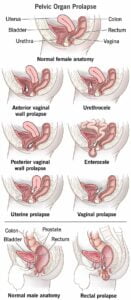Ameloblastoma: Diagnosis and Treatment
Diagnostic Procedures
The initial steps in diagnosing Ameloblastoma typically involve:
Imaging Tests
- X-rays, CT scans, and MRI scans are instrumental in assessing the tumor’s size and spread. These imaging tests can sometimes detect ameloblastoma during routine dental check-ups.
Biopsy
- A definitive diagnosis is made through a tissue biopsy, where a sample is extracted and analyzed in a laboratory setting.
Treatment Options
The treatment strategy for Ameloblastoma varies based on the tumor’s characteristics and includes:
Surgical Removal
- The primary treatment involves surgical excision of the tumor. Given ameloblastoma’s tendency to integrate into the jawbone, the procedure may extend to removing the impacted bone segment.
Jaw Reconstruction
- Post-surgery, if the jawbone is affected, reconstructive surgery is performed to restore the jaw’s functionality and appearance, aiding in speech and eating abilities.
Radiation Therapy
- In cases where surgery is not viable or as a postoperative measure, radiation therapy with high-energy beams is employed.
Dental Prosthetics
- Prosthodontists specialize in creating dental prosthetics to replace missing teeth and other oral structures compromised by the tumor or treatment.
Supportive Care
- A multidisciplinary team, including dietitians, speech and language therapists, and physical therapists, provides comprehensive care to address challenges related to speaking, swallowing, and nutrition.
Follow-Up Care
- Owing to the potential for recurrence, ongoing follow-up appointments are crucial for long-term monitoring.
Ameloblastoma:
| Topic | Description |
|---|---|
| Overview | Ameloblastoma is a rare, benign tumor that typically develops in the jaw near the molars. It originates from the enamel-forming cells on teeth. |
| Types | – Conventional Ameloblastoma: Aggressive, often recurring, and primarily found in the lower jaw. <br> – Unicystic Ameloblastoma: Less aggressive, occurs at a younger age, and usually in the back of the lower jaw. <br> – Peripheral Ameloblastoma: Rare, affects gums and oral tissue. <br> – Metastasizing Ameloblastoma: Extremely rare, with tumor cells spreading beyond the jaw. |
| Symptoms | Often asymptomatic, but may cause pain, swelling, or jaw distortion if left untreated. |
| Causes | Unclear, but genetic mutations likely play a role. |
| Complications | – Rare malignant transformation. <br> – Metastasis (very rare). <br> – Recurrence after treatment. |
| Diagnosis | – Imaging tests (X-rays, CT, MRI). <br> – Tissue biopsy. |
| Treatment | – Surgical removal of the tumor. <br> – Jaw reconstruction if needed. <br> – Radiation therapy. <br> – Dental prosthetics. <br> – Supportive care. |
| Follow-Up | Lifelong monitoring due to recurrence risk. |
Feel free to ask if you need further details or clarification! 😊


